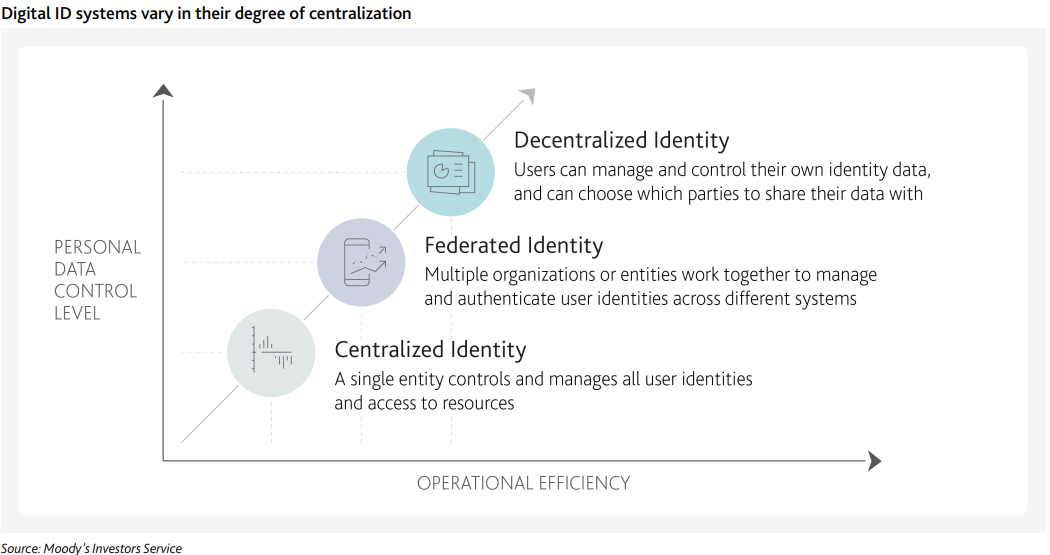The Future of Digital Profiles and Avatars
 Ani
Ani
The way we represent ourselves online is undergoing a fundamental transformation. Traditional user profiles, tied to centralised platforms, restrict true ownership, portability, and privacy. But what if identities could be self-sovereign, interoperable, and decentralised, seamlessly working across all apps, chains, and ecosystems?
We have to maintain separate profiles for each platform we use. Social media, professional networks, gaming accounts, and various decentralised applications (dApps). This means a person might have an X handle, a LinkedIn profile, a gaming avatar, and a separate Web3 identity, each with different usernames, profile pictures, and reputations. And rightly so. Your gamer friends would make fun of your linkedin avatar and nobody would take you seriously if you put your gaming avatar on linkedin. Prejudice is common and we’re not here to argue that. The problem we’re discussing is both deeply personal and about presentability without sacrificing originality.
There is no single source of truth for your identity today. Someone might recognise you on X or instagram but have no idea it’s the same person on Discord or LinkedIn. You have to manually update every profile when you change details like bio, profile picture, or contact info. No wonder a lot of us only update our profile pictures once in 5 years, more or less at a time, when the image itself stops looking like us. Moreover, reputation and social ranking are siloed. A person’s credibility on one platform does not carry over to another. A decentralised identity system would eliminate these silos, providing a unified, portable profile that users can take across the internet, whether in Web2 or Web3. With centralised identity systems, it’s also easy to create fake accounts, impersonate others, and conduct fraudulent activities. There is no universal way to verify someone’s authenticity across platforms. A decentralised, verifiable identity system using Soulbound Tokens (SBTs) and on-chain attestations would help ensure authenticity, making it easy to verify real users while maintaining privacy and anonymity where needed. Read about Decentralised Identities in this article if you’ve not yet.
The centralised identity systems of today are broken, fragmented, insecure, and controlled by corporations with misaligned incentives. What you need is more than a linktree. A decentralised, blockchain-based identity would give users true ownership, privacy, and control, allowing them to manage their digital presence across the internet without relying on third parties. With self-sovereign profiles and interoperable avatars, users can seamlessly interact across dApps, metaverses, and Web2 platforms while ensuring security, censorship resistance, and portability. The future of digital identity is decentralised, user-owned, and truly interoperable, putting individuals back in control of their online presence. So, a general flow towards decentralised identity would look something like this:

But we’re here to propose a new form of profile management.
Imagine a single profile that works across all dApps, protocols, and metaverses. An identity truly owned by the user, secured on-chain, and resistant to censorship. This decentralised identity framework introduces:
✅ Unique, Portable Profiles – A universal identifier like username@network.soul that functions across any application.
✅ On-Chain Digital Identity (DID) – A standardised format (did:chain:address) ensuring cryptographic ownership.
✅ Decentralised Storage – Metadata and avatars stored securely on IPFS/Filecoin rather than centralised servers.
✅ Privacy Controls – Users decide which parts of their profile are public or private, including app-specific avatars.
In Web2, Gravatar provided a simple yet powerful solution for managing profile pictures across multiple websites. It allowed users to upload an avatar once and have it automatically appear on any site that integrated Gravatar, such as WordPress, GitHub, and Stack Overflow.
How Gravatar Works in Web2
User creates an account on Gravatar.com
Uploads an avatar and links it to their email
When logging into a supported website, the site queries Gravatar with the user’s email
If an avatar is found, it’s displayed automatically. If not, a default avatar is shown
This model enabled seamless profile picture portability across multiple platforms without requiring repeated uploads. However, Gravatar still has centralised limitations, such as:
Controlled by a single entity (Automattic, the company behind WordPress)
Subject to data privacy concerns and potential censorship
Limited to Web2 applications, making it unusable in decentralised environments
![]()
So, imagine a decentralised profile system, that allows users to maintain a single identity that works across all platforms, chains, and applications, ensuring ownership, security, and interoperability. Instead of being tied to a single company, these profiles live on the blockchain, controlled by the user’s private key.
The proposed ERC-7866: Decentralised Profile Standard (Ethereum Magicians Discussion) aims to create an interoperable identity layer that enables:
A unique identifier as Decentralised Profile tied to a user's wallet address and formatted as
username@networkslug.soul.Metadata storage on IPFS, Arweave, or other decentralised storage solutions.
Custom avatars per dApp, allowing users to set specific profile pictures for different applications while maintaining a default avatar.
Access control, letting users choose what information is public or private.
Cross-chain interoperability using Axelar, LayerZero, or similar messaging protocols.
Technical Implementation of a Decentralised Profile
1. Unique Identifier: Decentralised Profile
Each user is assigned a decentralised identifier (DID) in the format:
did:chain:address
For example:
did:ethereum:0x1731B43cc0B6F14777FBE14bfd44847C3a0e47dEdid:xion:xion1gxasu43e4wt89gjpfp4vhm977yf356x786w9c7
This DID is mapped to a human-readable username in the form of a Decentralised Profile (CSP):
username@networkslug.soul
Example:
alice@eth.soul(for Ethereum)bob@bnb.soul(for Binance Smart Chain)
The CSP acts as the user’s universal profile handle, allowing seamless recognition across multiple platforms.
Profile Metadata Storage
A user’s profile information (bio, links, avatars, etc.) is stored off-chain on IPFS, Arweave, or decentralised storage networks to ensure scalability and cost-efficiency.
Each profile contains a structured metadata schema, defining:
{
"name": "Alice",
"bio": "Web3 builder & NFT enthusiast",
"avatar": "ipfs://Qm123...",
"dapp_avatars": {
"0xDapp1...": "ipfs://QmAvatar1...",
"0xDapp2...": "ipfs://QmAvatar2..."
},
"socials": {
"twitter": "@alice_eth",
"github": "alice-dev"
},
"visibility": {
"avatar": "public",
"profile": "private"
}
}
This enables custom avatars per dApp and user-controlled privacy settings.
Bringing Gravatar’s Convenience to Web3 with CyberSoul Profiles
The ERC-7866 Decentralised Profile Standard takes the best aspects of Gravatar while eliminating its centralisation flaws. Instead of relying on an email-linked database controlled by a company, CyberSoul Profiles are:
✅ Tied to a decentralised identifier (DID), not an email
✅ Stored on IPFS/Arweave instead of a centralised server
✅ Interoperable across all dApps, metaverses, and chains
How It Works in Web3
User registers their decentralised profile (CSP) and sets a default avatar
They can assign different avatars for specific dApps or keep one universal avatar
Any dApp can query the CyberSoulProfile contract to fetch the avatar using CSP
If a custom avatar for that dApp exists, it’s displayed, otherwise, the default avatar is used
This ensures that, just like Gravatar in Web2, users only set up their avatar once and it works everywhere, but in a fully decentralised, censorship-resistant, and cross-chain manner. 🚀
A decentralised profile system isn't just about convenience. It’s about user autonomy, security, and ownership in an increasingly digital world. By moving away from platform-dependent identities to a self-sovereign system, users gain true control over their digital selves, one profile, usable everywhere.
![]()
With the right architecture, Web3 can finally have a standard, chain-agnostic identity layer, paving the way for an open, decentralised, and user-first internet. 🌐 Come support this new standard and let’s step forward into decentralised profiles. 🙌
Subscribe to my newsletter
Read articles from Ani directly inside your inbox. Subscribe to the newsletter, and don't miss out.
Written by
